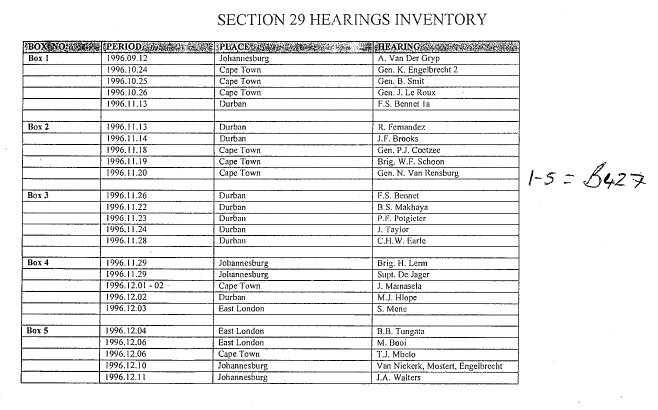In the book Paper Wars, Piers Pigou highlights that the Truth and Reconciliation Commission (TRC) processes generated an enormous paper, digital and audiovisual archive, both in terms of its own internal institutional records and an array of substantive information about violations and related contextual factors. The TRC was established in 1995 through the Promotion of National Unity and Reconciliation Act of 1995 (PNURA), with the purpose of investigating gross human rights violation that had taken place between 1960s until 1994 in South Africa.
The Commission was a platform that allowed South Africans to take a glimpse of their country in the dark repressive days. The documentation of the Commission’s work generated a paper trail that traced South Africa pre-democracy years, in the hope that this would begin the process of healing. The TRC also sought to establish accountability for the violations and trauma caused and identify effective remedies and reparation.
 The TRC recommended that its numerous records and materials be listed, categorised and transferred to the custody of the relevant government department - the National Archives and the Department of Justice. The National Archives generated a transfer list of the TRC material which consisted of records of the statements taken; the investigations of the cases brought forward to the commission; submissions from various institutions, committee meetings, human resources documents, amongst other records. The transfer list was generated by the National Archives, which were the recipient of TRC materials – indeed, all the relevant TRC departments had to create an inventory and give the necessary resources to ‘professionally’ transfer the materials over the National Archive, under the custodianship of the Department of Justice.
The TRC recommended that its numerous records and materials be listed, categorised and transferred to the custody of the relevant government department - the National Archives and the Department of Justice. The National Archives generated a transfer list of the TRC material which consisted of records of the statements taken; the investigations of the cases brought forward to the commission; submissions from various institutions, committee meetings, human resources documents, amongst other records. The transfer list was generated by the National Archives, which were the recipient of TRC materials – indeed, all the relevant TRC departments had to create an inventory and give the necessary resources to ‘professionally’ transfer the materials over the National Archive, under the custodianship of the Department of Justice.
Read the TRC transfer lists here
SAHA has demonstrated a longstanding interest in the South African Truth and Reconciliation Commission (TRC). For over a decade, much of SAHA’s archival practice and information activism, has been focused on making the work and records of, and surrounding, the South African TRC more readily accessible. SAHA’s Freedom of Information Programme (FOIP) often uses the Promotion of Access to Information Act No. 20 of 2000 (PAIA) to request access to records relating to TRC. However, government departments that receive such requests often refuse them, sometimes stating that the record does not exist or can’t be found (applying Section 23 of PAIA).
In 2003, SAHA was able to access the TRC transfer list, using PAIA. This has proved an invaluable tool for cross-checking record requests and refusals. If a government department resorts to applying Section 23 in terms of refusing access to TRC records, SAHA is able to prove that the record does, in fact, exist. The transfer lists also prove a helpful aid to determining the physical location of such records, as they detail the box and files numbers of such records. Thus, the TRC transfer lists are a key resource in the fight against non-compliance with PAIA regarding the TRC's records.
Browse SAHA's TRC Collections here
Learn more about SAHA's Freedom of Information Project (FOIP) here





